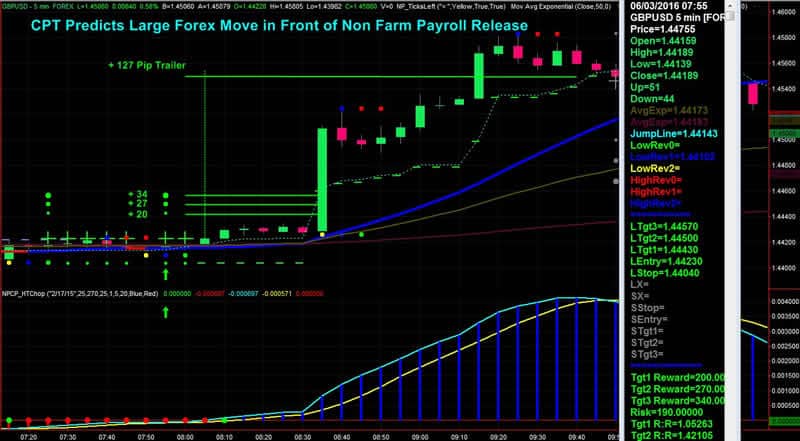- July 5, 2016
- Posted by: Shane Daly
- Categories: Basic Trading Strategies, Trading Article

 We here it all the time as traders: Emotions will kill your chances of trading success.
We here it all the time as traders: Emotions will kill your chances of trading success.
Anybody whose been in a trade and allowed emotions to dictate their course of action understand this to be true.
- Maybe it’s moving the stop further from oncoming price because you can’t emotionally handle another trading loss.
- Maybe it’s seeing some quick moves in your favor and you cash out because the amount will cover your previous losers.
- Perhaps it’s buying the highs after a big run up or selling lows after a decline because you can’t miss a move.
Whatever thing you have done in the name of emotions..know it was the absolute wrong thing to do.
Emotions in trading will seriously impede the progress of a trader.
Mechanical Trading Systems Keep You Honest
Nobody wants to miss the boat and not cash in on the large moves but having a scarcity mentality is the path to ruin.
There will always be another trade but whether you take the trade or not depends on many things.
One reason people may not pull the trigger on the next trade is due to having a string of losses piling up.
But pulling the trigger on an entry from a trading system you have tested is exactly what you must do.
If you are trading, you must have a trade plan. This trade plan will be your lifeline and ensure that you are staying inside the parameters of the trading system you are using.
What happens though if your trade plan has many discretionary aspects?
The more you put human input into your trading decisions, the more you have emotions lurking in the background ready to make you do something stupid.
This is where mechanical systems have their
strength if you adhere to the trade plans.
The system will always fire of a trade setup and you must commit to taking each one the fits the plan.
Let’s take a look at some variables that are worth thinking about if mechanical trading is something you have considered.

In the picture above you can see that entries, stops and targets are laid out on the chart leaving you with no discretionary aspects except moving them around key and structural levels.
The trade plans and instruction will tell you exactly what has occurred that makes that a setup. You are not flying blind and if the mechanical trading system you are considering doesn’t explain the entries, pass on the system.
The trade plan will tell you when to move your stop, where to move your stop (outlined on the chart), where to take your profits and in this example, where to have a runner for bigger profits.
What are the benefits of having the setups printed?
- No guesswork is involved
- Knowing at a glance if entries, targets and stops are near any concerning price structure
- Allows precise trade management when price meets certain targets
Since the setups are printed, it also allows you to easily back test as far back in history that you have data for.
What are the benefits of targets?
- You know exactly where to get out when price reaches the area
- The feelings of greed can be overcome as you place your order to exit a head of time
- You don’t have to watch the charts every minute of every trading session
Back testing Your Trading Systems
What other way is there to test the validity of the system historically than through back testing? You can certainly forward test (something you should do anyhow) but can you imagine forward testing for 5 years…the same amount of time you can back test during the course of a week?
Once you get an idea of the success of the system, it can aid you in being disciplined in following the rules. Having confidence with the method you use when interacting with your trading charts will go miles towards you implementing according to the trade plan you have set out.
Think of a GPS.
If you are venturing out on a driving journey using a GPS, you put your trust in traveling the unknown path to a guidance system. There may be variables such as accidents or road closures that impede you however you will still probably reach your destination by following the guidance system.
In trading, that guidance system is the trading plan for the method you are trading.
When trading, the outcome on each individual trade is unknown but if following a properly tested system, you will probably reach the destination of more $ wins than losses.
Discipline can be an important by-product of diligent back and forward testing. Without discipline, your chances of trading survival are almost none.
Downfalls of back testing.
Back testing will give you an idea of the validity of the trading system.
But it will just be an “idea” of the validity.
Depending on how you back test, you have the benefit of hindsight that may alter how you take each trade.
It also won’t take into account slippage that may have occurred during the trade entry or exit.
You don’t have to worry about emotions taking over like you do during live trading. Emotional trading where you ignore the trading rules can take a profitable system and turn it into a losing system.
It also won’t cover slippage and no-fills that can occur in real time trading.
You should account for those variables when considering the results.
The most difficult part of following mechanical rules is having the ability to push the button when required. Like any habit, this can only become ingrained if you are consistently taking action according to the trade plan.
Mechanical trading systems and rules are not simply “enter here, exit here”. In the system shown in the above graphic there are mechanical adjustments around key levels and market structure. These can put you above or below any roadblocks that may impede the progress of the trade.
The secret is, once again, to be disciplined in execution. Without that discipline, it makes no difference what method you are trading. You will fail as the many who have gone before you.
